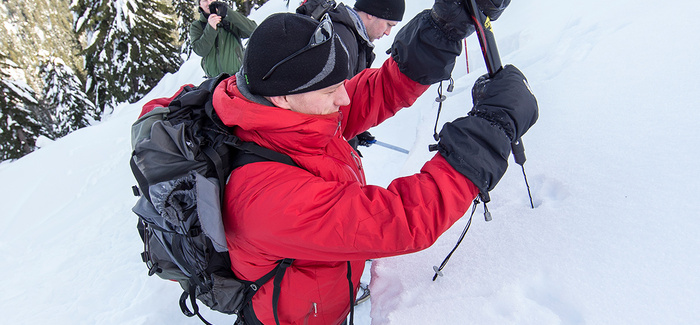
Avalanche Awareness: Be Prepared and Be Educated
Do you think low snowpack levels means low avalanche risk in BC Mountains? Not true. Read on to learn more...
Posted by Grouse Mountain January 23, 2014
While the North Shore mountains may not be part of the current hotbed of avalanche danger in BC, we are offering courses in Avalanche Awareness Training for every and any winter enthusiast that loves downhill or exploratory activities.
This is what our very own Avalanche Forecaster, AJ Maheu had to say about the current state of snowpack and avalanche danger in British Columbia:
The Problem with Shallow Snowpack This winter has certainly brought unusually dry weather to the Southern half of British Columbia. The snowpack is thinner than usual almost everywhere. While one may think that low snow depth would lead to reduced avalanche danger, shallow snowpack seasons present their own avalanche problems.
This is what our very own Avalanche Forecaster, AJ Maheu had to say about the current state of snowpack and avalanche danger in British Columbia:
The Problem with Shallow Snowpack This winter has certainly brought unusually dry weather to the Southern half of British Columbia. The snowpack is thinner than usual almost everywhere. While one may think that low snow depth would lead to reduced avalanche danger, shallow snowpack seasons present their own avalanche problems.
Snow came late this year and we can all remember the cold snap in December. This combination of shallow snow and cold weather causes a phenomenon known as faceting. Instead of settling in a cohesive layer, the snow becomes “sugary” and weak. When snow finally came, the damage was done and we watched as the snowpack was building on a very shaky, faceted foundation.
Weaknesses like these can persist in the snowpack for a very long time, sometimes for the whole season. As the snow gets deeper and the season moves along it is easy to forget that all this new snow is sitting on a weak faceted base and with every new snowfall we have to ask ourselves: “Can the foundation take that extra weight?” There is a high correlation between avalanche accidents and deep persistent weak layers. This is partly because deep weak layers don’t generally give many warning signs and the avalanches they produce tend to be quite large.
Unusual weather brings unusual avalanches and this season is certainly unusual. Extra caution, conservative decision making and avalanche education are essential to stay safe in these conditions.
